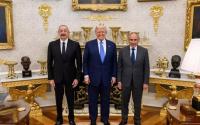East Asia is the locus of three countries - China, Korea, and Japan - which have long and related civilizational heritages. Up to the nineteenth century, to the extent that these countries were aware of the existence of the European world, it was a distant, not very interesting, and not very important part of the world. In the nineteenth century, this distant world, organized in the form of a capitalist world-economy, intruded suddenly into East Asia, and forcibly incorporated the region into the economic and political networks of this capitalist world-economy. From the point of view of the dominant strata and countries of that world-system, East Asia was considered merely one more area to be constructed as a zone producing peripheral products in the axial division of labor of the world-economy.
Needless to say, East Asians were not happy with this subordinated role in this world-system into which they had been incorporated. Japan began early to try to reverse this situation with the Meiji Restoration. It sought to learn the skills and create the internal institutions necessary to allow it to transform its role in the worldwide division of labor in which it now found itself. China began its effort at reversal a little later with first the Revolution of 1911 and later the Long March of the Chinese Communist Party. Korea's attempt at reversal was delayed by the Japanese colonization of Korea, and started only after 1945.
As of the end of the Second World War, all three countries were still playing a secondary role in the modern world-system. The United States had now become the hegemonic power of this world-system. It had overwhelming economic advantage. It was the strongest military power in the world. Its only serious military and ideological rival was the Soviet Union. To keep the peace, something advantageous to both powers, the U.S. and the Soviet Union made a tacit deal, called metaphorically Yalta. They agreed to divide the world into two segments, and agreed to keep the boundaries of these two zones intact. They further agreed to go their separate economic ways (in effect the Soviet Union autonomously withdrew from the exchanges of the world-economy). And they agreed to engage in a rhetorical, but rigorously non-violent, struggle called the Cold War. The function of the rhetoric for each side was less to change the geopolitical status quo than to preserve it by each thereby keeping its allies and satellites in line.
The four times the Yalta arrangement was tested - the Berlin Blockade, the Korean War, the Quemoy-Matsu quarrel, and the Cuba crisis - each ended in a truce at the line of departure. The Yalta arrangement seemed to be working well. And then suddenly it got into trouble. Two major developments undid Yalta and thereby undid U.S. hegemony. The first was the remarkable economic rise of western Europe and Japan. By the mid-1960s, the U.S. had lost its economic edge over the productive enterprises of these two zones. They could not merely compete well with the U.S. in their home markets, but even in the U.S. market as well as in the rest of the world. Western Europe and Japan were no longer dependent economically on the goodwill of the U.S. government. They had become major economic rivals and therefore might aspire to political autonomy.
The second change was the unwillingness of some major countries in what had come to be called the Third World, or the South, to accept the status quo arrangements of Yalta. The first was China in which the Chinese Communists, defying Stalin, marched on Shanghai and established their rule. But China was not the only rebel. Cuba, Egypt, Algeria, but above all Vietnam all challenged the U.S.-dominated world order. In doing this, they did not have really have the support of the Soviet Union, which usually limited its role to rhetoric and a little money. But nonetheless Vietnam, a small country, was able not only to resist the United States but actually defeat the U.S. in war, an incredible feat that transformed the world-system.
It was at this point, in the early 1970s, that we can observe the beginning of the slow but persistent decline in U.S. power, the end of its true hegemony. The story of the next thirty years, 1970-2000, was the story of the attempt of the United States to slow down its loss of power in the world-system. For East Asia, this was a period of enormous economic growth, first in Japan, then in the so-called four dragons (South Korea, Taiwan, Hong Kong, and Singapore), and then in mainland China.
The advent of George W. Bush to the White House, and the attack of September 11 which gave the neo-cons in the Bush administration the legitimacy to carry out their program of unilateral military interventionism culminated in the U.S. invasion of Iraq in 2003. This invasion has turned out to be a major fiasco for the U.S. - diplomatically, politically, economically, and even militarily. The intention of the neo-cons was to strengthen the U.S. position in the world-system and restore its hegemony. The result has been exactly the opposite. It has accelerated Europe's drive for political autonomy. It has quickened the pace of nuclear proliferation, most notably in North Korea and Iran. And it has deeply hurt the political and moral credibility of the United States.
Geopolitically, what we may expect in the next twenty years is the emergence of both Europe and East Asia on the world scene acting independently of the United States. But what form will this take in East Asia? Economic cooperation and coordination between the three countries is the least of the problems. They are all already strong loci of capital accumulation and it can be expected that they will become stronger in the decades to come. Working together, they could probably become the principal motor of the world-economy. They have everything to gain by economic integration and very little to lose. They will probably move in this direction decisively.
The principal difficulties are political. The three countries have historic grievances with each other which are still very important in their continuing relationships. Korea still remembers its colonization by Japan. China still remembers the Japanese occupation of most of the country in the 1930s and 1940s. And Japanese nationalism is still fueled by a sense that, over the millennia, they were culturally looked down upon by China and Korea. The second great political problem is that both Korea and China are still divided countries, and their reunification remains a prime and urgent concern. The third great political problem is the question of the form and extent of military power each will assume, and in particular the development of nuclear weapons.
If East Asia is to play the economic role that is possible for it, it must resolve these political problems. Neither China nor Japan will be able to fulfil its economic potential without the other. And I would add even China and Japan together cannot do it without Korea. This means that a major intra-East Asian political negotiation must occur, of the kind that occurred in western Europe over the last half century. And this is of course where the uncertainty lies.
Should all three countries be able to put historical grievances behind them (not really an impossible idea), should Korea and China find the formulas that will permit political reunification of their countries, and should the three countries make clear decisions about their military build-up and perhaps military collaboration, then East Asia will be a formidable force in world politics in the twenty-first century.
They will then have three major policy decisions to make: (1) how they relate to the United States; (2) how they relate to the countries in their near perimeter (specifically, southeast Asia) and in their outer perimeter (south and southwest Asia); (3) what position they will take in the North-South struggle in the coming decades. It should be noted that these are exactly the same issues that are facing Europe in the coming decades (although the perimeters are different).
For the last fifty years, struggles and debates in the world-system have been defined and constrained by the United States (and its collusive pseudo-opponent, the Soviet Union). In the next fifty years, we shall all find ourselves in a truly multi-polar world. We also shall all find ourselves in transition from a world-system that is a capitalist world-economy to some other kind of world-system, as yet undecided and undefined. East Asia will be a central part of that process, but it will not be alone.






